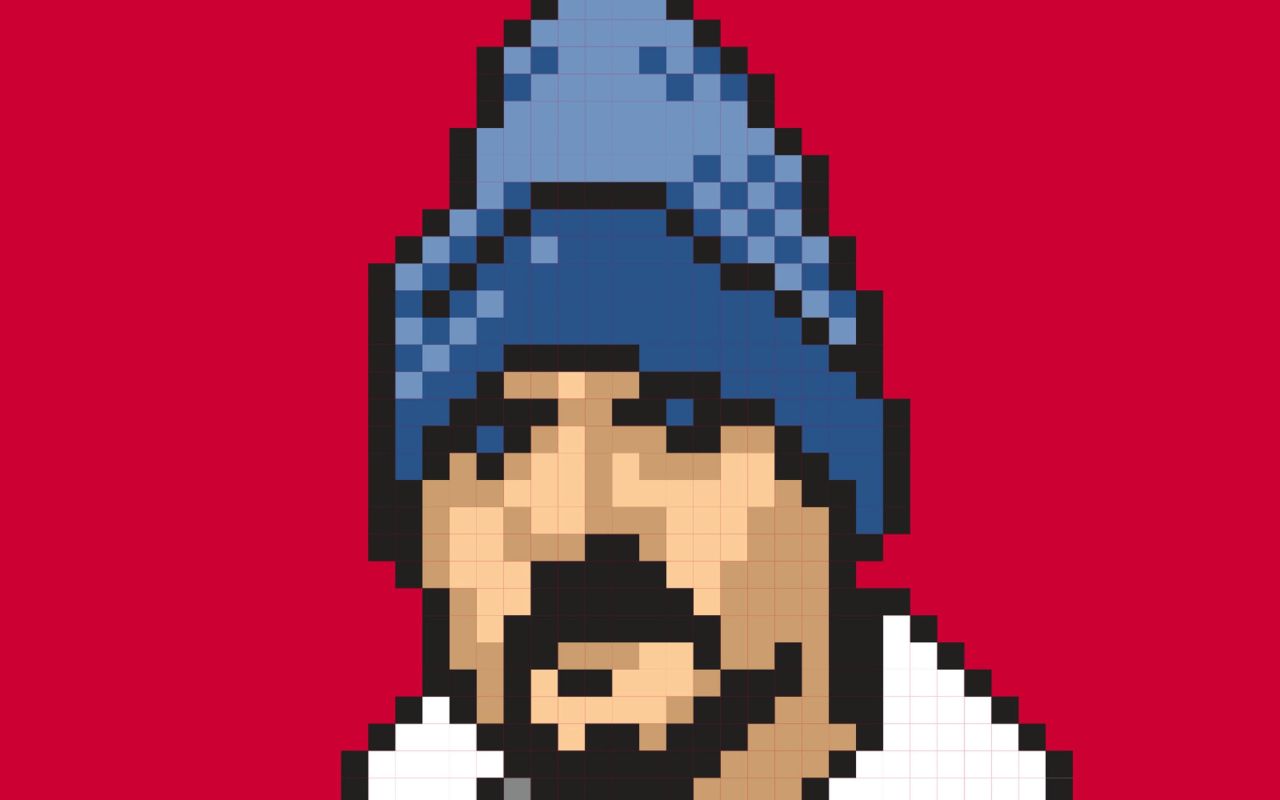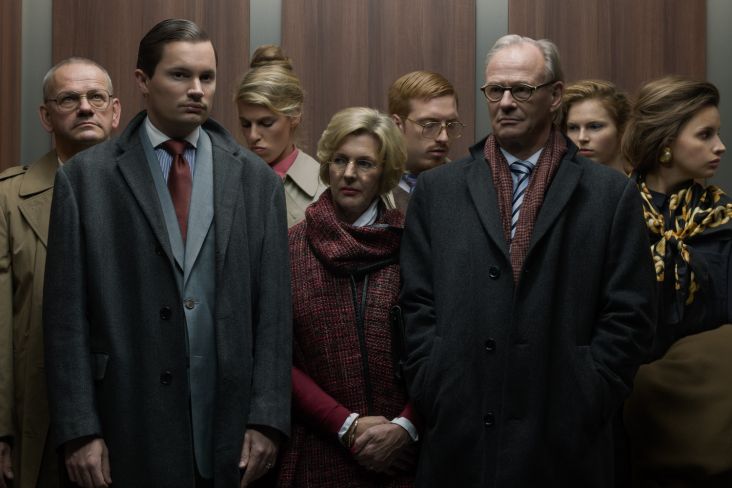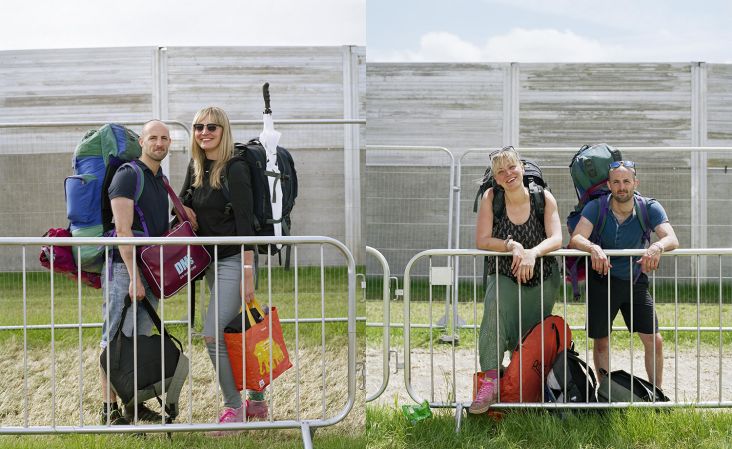Jeffrey Zeldman on agency life, the changing web and why he had to get back to his roots
Jeffrey Zeldman is among the most famous web designers in the world. He is widely considered a guiding force behind the web standards movement and independent web publishing, and his work has influenced countless web designers and developers worldwide.

His personal site Zeldman.com attracts millions of readers, and his hugely successful design studio Happy Cog has worked with clients such as Clear Channel Entertainment, Warner Bros. Pictures, Fox Searchlight Pictures, JazzRadio.net, and The New York Public Library.
He's the founder of A List Apart – an online magazine for 'people who make websites', read by 65,000 creative professionals every week – and co-founder of A Book Apart and the design conference An Event Apart.
Just recently, he decided to go back to his roots and launch studio.zeldman. We chatted to Jeffrey about his reasons behind this latest development, and to pick his brains about his career so far and what has changed since he established The Web Standards Project over 18 years ago...
How did it all begin? Describe your path to becoming a designer and developer.
In 1995, I was treading water in advertising. In the past, I’d been a Casio and synthesiser player for the Insect Surfers, a stringer for The Washington Post, a dishwasher, a security guard, a sandwich maker, a columnist for the City Paper, and a stained glass artist’s assistant. Copywriting and art direction were a way out of low-paying 'artist’s jobs', but greatness in advertising eluded me, and I wasn’t made for the cutthroat competitiveness of that world.
I worked with and for some truly great art directors and writers, and I learned how to work with clients—and, just as importantly, how not to. In my experience, there was a tremendous amount of anti-client feeling and dysfunction at most agencies.
Two years after getting sober, I was marking time at a New York entertainment agency. A client, Don Buckley of Warner Bros, asked if we could make websites. The agency president lied and said yes, then asked Alec Pollak, Steve McCarron and I if we could make websites. We also lied and said yes. Three months later, in March of 1995, we released batmanforever.com (don’t look for it, it’s been offline for ages).
Since we didn’t know what we were doing, we broke all the rules of 1995 web design. We had an animated splash page with a push animation graphic. Remember, this was a year before animated GIFs, and three or four years before Flash! We created full-screen backgrounds by hacking the proprietary background image tag Netscape Communications (the only browser maker that mattered) had introduced in its spanking new Netscape Navigator 1.1 browser.
You’re considered the father of Web Standards – A List Apart, Designing with Web Standards, etc. – how did you gain such a title?
Some people call me the space cowboy. Some call me the godfather of web standards. Eric Meyer, from the stage of An Event Apart, once mistakenly called me the grandfather of web standards. And Bloomberg Businessweek labeled me the 'king' of web standards.
The web standards movement that began in 1998 was an attempt to make sense of what we now call front-end web development at a time when different browsers supported different proprietary technologies. By 1998, e-commerce was happening, 'portals' were all the rage, dot-com businesses were fuelling wild economic growth and new kinds of businesses and business models… yet there was no sensible model for building websites. Browsers didn’t even fully support all of the HTML 1.0 specification!
So some internet friends and I, led by Glenn Davis and George Olsen, got together to form a grassroots coalition of web designers and developers to cohere around a few languages and protocols that had the potential to make web development predictable and rational, and to make content work for all people and devices.
We decided to label two W3C recommendations 'standards', and to demand that all browser and device makers correctly and fully support HTML and CSS (plus the newly standardised JavaScript) before adding support for proprietary features.
Believe it or not, at the time, this was a radical idea. Developers charged extra for knowing the proprietary ins and outs of Netscape 3 and 4 and Internet Explorer 3 and 4. They saw browser incompatibility as a gravy train. And browser makers hated us. Not the engineers, but the marketers and managers running the companies. They saw browser building as a fight for dominance of the internet, and software supremacy as the key to that dominance. I could spend hours sharing the history of the browser wars. What matters is that, incredibly, we won. HTML and CSS and JavaScript won. First in the browsers, whose engineers jumped through hoops to bring genuine standards compliance to our medium. And then among designers, whom we persuaded to stop using tables for layout, and to drop Flash—despite its many advanced capabilities—for structural, semantic, accessible, progressively enhanced HTML, CSS, and JavaScript.
Oh, and I also wrote a book about this stuff.
The web we have today could not exist if we had not done these things. And the web we have today is also constantly under attack by the exact same kinds of thinking that led to the browser wars, Flash, and so on.
So you launched Happy Cog in 1999. What motivated you to start your own business?
I was working as a creative director at a New York startup in 1999. Despite my title, I felt powerless to affect the company’s product or even control our design and code. The dot-com sensibility made me nervous. It was a bubble. Money wasn’t real. It made me very uncomfortable. I was born too working class, and our family later became too middle class, for me to be comfortable with Wall-Street-like business games. I just wanted to design simple websites that mattered and charge a fair price for my work. So I quit, one month before my stock options would have come due. Didn’t matter: six months later, the company, along with hundreds of others like it, was gone.
I spent too many of my formative creative years complaining about the decisions made by the people who paid my salary. It was time to stop complaining and start creating. Remember, I came up during a time when, if you didn’t like the music on the radio, you learned to play an instrument and started a band. DIY, we called it. I found that what was true for punk rock was also true for design.
You’ve been incredibly successful. What makes Happy Cog stand out from other studios?
In January of 2000, when Happy Cog was still just me, I had one client. This client was paying me $1000 a day, and it was the only money I had. I was supporting myself and a girlfriend, and the dot-com bust was happening—lots of people were out of jobs. I should have hung onto that gig for dear life.
But my relationship with the client was fraught. We were a mismatch. And after three days, rather than keep taking the client’s money, I resigned.
It was snowing when I walked home. I was going to have to tell my girlfriend that I’d walked out on our only source of income. (She ended up supporting my decision because she was a good person.)
As I trudged through the snowy New York streets, it occurred to me that I couldn’t be bought. I was walking out on money, with no clear plan for how I was going to earn my next dollar. Yet I knew I was doing the right thing because a bad client/designer relationship is toxic for both people and both their businesses.
As Happy Cog grew, we always ran it the same way—only taking projects we believed in, working with clients we respected, and where the feeling was mutual. It allowed everyone to collaborate and do their best work. It’s what Happy Cog still does, even without me (I left this year), and it’s a core principle of my new studio, too.
So you’ve just gone back to your roots and launched studio.zeldman. Why the change?
I had become a figurehead at the company I started, so it was time for me to start fresh, at a new startup, where I can design again.
When you’re establishing a design studio, you build a reputation through your work. As you grow, you hire people and make them responsible for the jobs you used to do yourself. That’s okay, because you’re hiring very gifted people. And while you’re letting go of control, and trusting those gifted new people to do the work you used to do, you find yourself doing strategic things, managerial things.
It’s been an important stage of my professional growth, and I know it all worked out beautifully for Happy Cog and its clients. But I started missing getting my hands into the work, and after a while, it was a longing I could not ignore.
If you go even a few months without designing, you start to lose your ability. That’s true for any kind of design. And it’s five times as true in our hyper-fast world of web and interaction design. If you stop designing websites for too long, you stop being a designer. I had to get back to my roots.
Growth is hard going and does take us further away from the creative work. Would you say building an agency is still worthwhile?
For me, it certainly has been. I’ve worked with amazing partners who taught me more than I ever taught them. Starting and growing Happy Cog—along with related businesses like A Book Apart and An Event Apart—has been its own, incredible design journey. It turns out companies aren’t accidents. They’re designed. You design your end-product. You design your customer experience. You design your staff experience.
And, just like in interaction design, you mainly get things wrong and redesign. Iterate, test, adjust. It happens on the things we design for our clients and ourselves, and it happens in our companies, too. Those experiences and that kind of design (or 'design thinking', if you must) aren't for everybody—I know and have worked with some really talented designers who only do graphic design. They have no interest in building a business. And that’s great for them. It’s the right choice for their careers. What I did was right for mine. And getting back to what I love most is also right for me at this time.
"If you go even a few months without designing, you start to lose your ability. That’s true for any kind of design. And it’s five times as true in our hyper-fast world of interaction design. If you stop designing websites for too long, you stop being a designer. I had to get back to my roots."
We have to ask – what was the thought process behind studio.zeldman’s website design?
Funny you should ask! The short answer is, the studio launch strategy shaped the content, and the content shaped the concept. Just as things always should be. When I was in advertising, the idea had to come out of the product, and the execution had to reflect the idea. I’ve always approached design the same way.
Not that there was anything purist or mechanical about the process. I also spent a lot of time sketching randomly, reading, taking photographs, walking, looking at artwork, and collecting all manner of visual inspiration on my Pinterest account.
I encourage you to look if you’re a Pinterest member. And I apologise that Pinterest insists you join if you visit that link as a non-member. I wish they wouldn’t do that! I prefer attraction to compulsion: show me what you offer and, if I’m the right audience for it, I’ll join you.
At times I’m sure I seemed to be goofing off and daydreaming. I also experimented with all kinds of colour schemes and intricate layout ideas based on tiny modular units, before throwing it all out in favour of a simple, big idea.
And despite insisting that everything had to come from the content, which had to come out of the strategy, I also wanted to experiment with new layout ideas and subtly play around with old ones (like Skeuomorphism). For complete details, please read this.
How does this new website compare to your other designs over the past 20 years or so?
Believe it or not, it’s my first single-payer. I’m used to creating content sites built on serious architecture. This is the first site I’ve designed that completely dispenses with subpages and navigation.
It’s the first to experiment with rotated text. The first responsive project I’ve worked on where I really thought about how to completely fill a 27-inch screen. The first responsive project in a while that wasn’t designed mobile-first (although it was designed content-first).
But the colour choices are very typical for me. I used to get in trouble for it, especially for my tendency to use orange, red, and colours that are somewhere between the two. (My daughter Ava, who is eleven, calls studio.zeldman’s main background colour 'Mexican Red'. I like that.)
Steve Jobs once fired Doug Bowman and me over the colour orange. See, Apple had hired Doug and me to redo apple.com’s front-end code using CSS and semantic HTML (instead of the table layouts it was using). And our client at Apple had given us permission to mention on our websites that we were about to do some work for Apple.
Now, it turns out, Apple has a rule that no one who works on anything for Apple can ever announce the fact. Not before. Not during. Not after. But our client didn’t know that, and neither did we. So we posted little entries on our blogs and went blissfully to bed. (Not together, mind you. For one thing, we live on opposite coasts.)
Anyway, that night, while we were sleeping, the internet blew up. Or at least that part of the internet that lived on Mac rumours discussion boards. Folks mistook the announcement to mean that Doug and I would be redesigning apple.com. They looked at zeldman.com and wrongly imagined all that tranquil Apple white background turning orange. In the middle of the night, the hubbub had reached an Apple marketing director, who phoned Steve Jobs at home to complain. I like to picture Jobs already asleep, dressed like Ebenezer Scrooge in a nightcap and nightshirt.
Jobs called my client. He called him all kinds of things. I always picture the scene taking place at Jobs’s house. The next morning, the client called to tell Doug and me that we would not be working on apple.com. They paid us almost our entire fee anyway, as a kill fee.
Of course, it wasn’t the money we cared about. We were fans. It was a terrible disappointment. And since that time, Apple equipment has often malfunctioned for me in ways it does not malfunction for other people. I assume it is Steve’s curse.
I don’t mind. I love Steve Jobs.
The website is very much focused on you. It makes sense. But tell us more...
It’s a small studio and a personal studio. When you hire us, you’re hiring me and my team. I’ll work on every project, together with a small corps of extraordinary developers, designers, and strategists. Our intent was to convey how personal this is.
Also, I left my portfolio at Happy Cog—both the projects I did entirely by myself (which are old) and those in which I played a large part. It’s a new day. We’re starting over. We’ll be judged on the new work we do. So the site is about me, and what I’ve done so far—and our clients will write the next page.
Can you tell us more about the first client you’ve landed?
He’s someone I met 25 years ago through a mutual friend, and we hadn’t seen each other or spoken since. Through his own fascinating career journey, he became CEO of a high-tech company with offices in the U.S. and Europe. Through their advanced and highly specialised services and products, they train people in some of the most mentally and physically challenging peacetime work on earth. And I can not disclose more at this time.
Their current website is competent. We hope to make it more than that. They work with an international clientele, and the process of qualifying their potential customers is incredibly complicated. We hope to offload some of that complex work to their site.
What this client does technically inspires awe. We hope to bring at least a hint of that to their site.
So what other types of projects/clients are you hoping to attract?
We want to flex our muscles and build our internal camaraderie and work processes by taking on a series of disparate, small-to-midsize projects that we can move through rapidly and effectively. I’d rather have five fascinating and very different smallish projects now than one huge one. We need to cut our teeth and establish our credentials, if you’ll allow me to mix more metaphors. We’re building a practice, and that takes… practice.
We also want projects with clear goals and a strong point of view. (We can help clients evolve those things if they aren’t sure what they need.) And content! We love content. There’s so much more that can be done with magazine sites, news sites, shops, and communities.
"Today some of us are still fighting for a web that works for everyone. While others focus so much on mastering an ever-changing torrent of tools and frameworks that they risk forgetting that the purpose of design is to help people."
You’ve blogged and published content on the web since 1995. What’s changed the most in all that time?
In 1995, people who wanted to share their lives through the internet learned HTML and maybe UNIX and Perl. In 2016, people still want to share their lives through the internet. It’s just much easier now through Twitter and Facebook and so on. With ease of use comes mass acceptance—something we could not have achieved if we still expected folks to learn HTML. Mass acceptance is a good thing.
In 1995, we thought the worldwide sharing of knowledge, hopes, and inspiration that the web offered could help usher in a borderless world of love, peace, and justice. In some ways, it has done a bit of that. But it’s also made it too easy for people to spread hate and cruelty. And, while the heights of human knowledge and wisdom are now just a mouse click away, so are the depths of barbaric ignorance, racism, and misogyny.
But it wasn’t only dreamers and latter-day hippies who got things partly wrong. In the late 1990s, businesspeople thought dot.com at the end of your company name was a magic bullet for success. Today companies want to be the Uber of toilet paper delivery. The more things change, the more the same few people get rich (while others lose their shirts).
In the 2000s, some of us fought for web standards to make web creation simpler. And, paradoxically, others embraced web standards because navigating the many browser quirks and imperfections was the kind of overly complicated challenge that tickled their OCD funny bones.
Today some of us are still fighting for a web that works for everyone. While others focus so much on mastering an ever-changing torrent of tools and frameworks that they risk forgetting that the purpose of design is to help people.
Our audience would love to hear some extra wisdom. If you could give one piece of advice to those just starting out, what would you tell them?
Give generously. Give back before you get. Pitch in. Do something for the community, whether it’s starting or contributing to a blog, starting or contributing to a project on Github, donating time and expertise to a worthy pro bono project, or teaching or mentoring someone else.
Certainly, people may want to work with you because of client projects you’ve done, or products you’ve worked on in-house. But you may attract even better jobs and clients if you show another side of yourself through non-commercial side projects.
What kind of legacy do you hope to leave?
I hope my daughter feels free to be her true self all her life. And I hope I’ve helped more people than I’ve harmed.
To find out more about Jeffrey, visit zeldman.com or his new studio website at studio.zeldman.com. Jeffrey has very generously offered Creative Boomers at discount on any upcoming An Event Apart conference. Enter AEACB at checkout and get $100 off your ticket.




 by Tüpokompanii](https://www.creativeboom.com/upload/articles/58/58684538770fb5b428dc1882f7a732f153500153_732.jpg)


 using <a href="https://www.ohnotype.co/fonts/obviously" target="_blank">Obviously</a> by Oh No Type Co., Art Director, Brand & Creative—Spotify](https://www.creativeboom.com/upload/articles/6e/6ed31eddc26fa563f213fc76d6993dab9231ffe4_732.jpg)
















